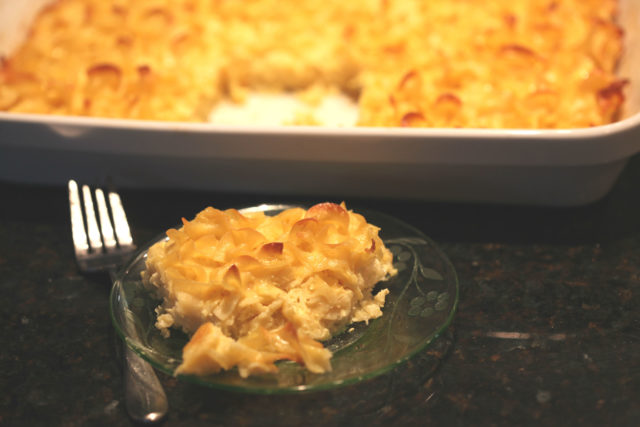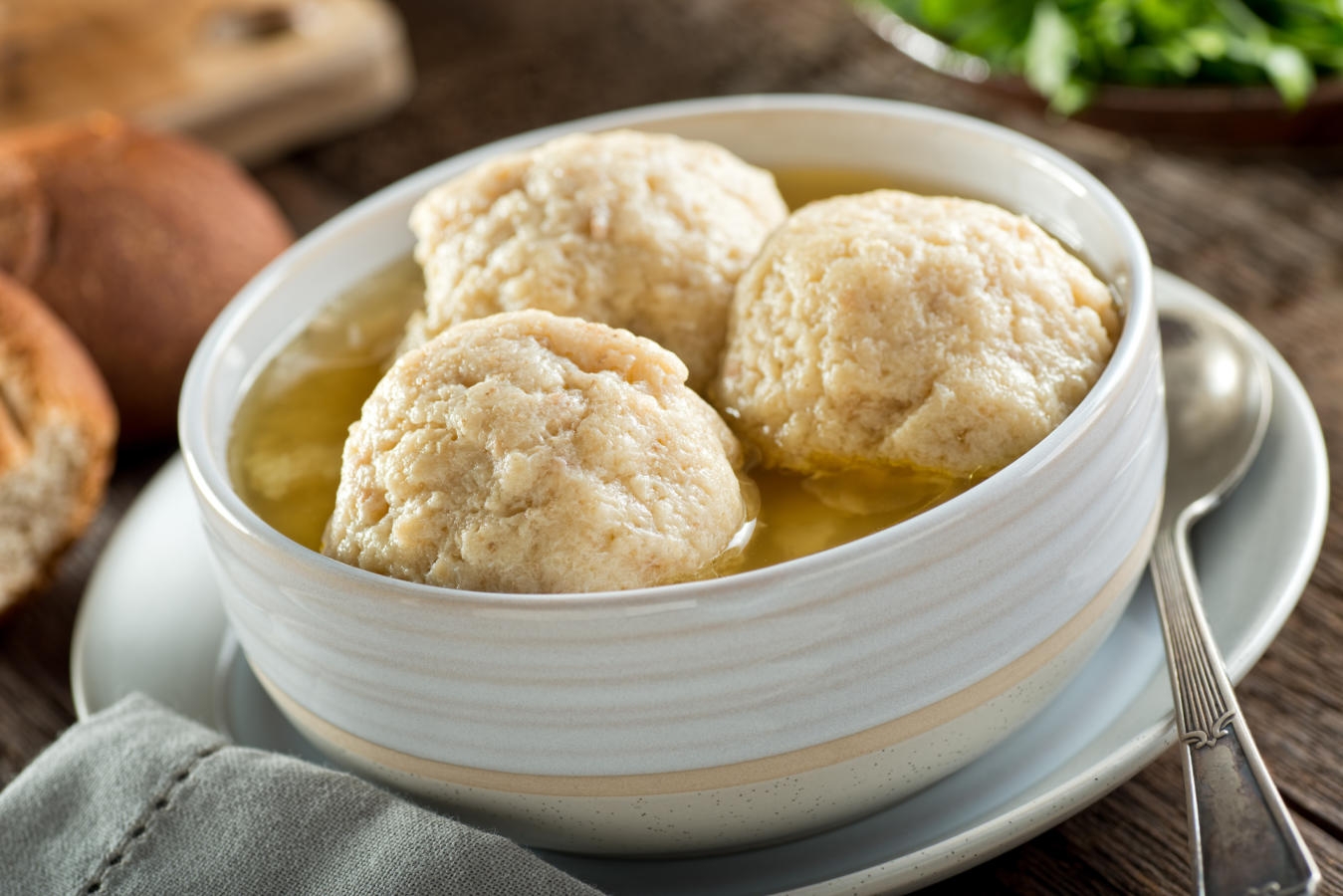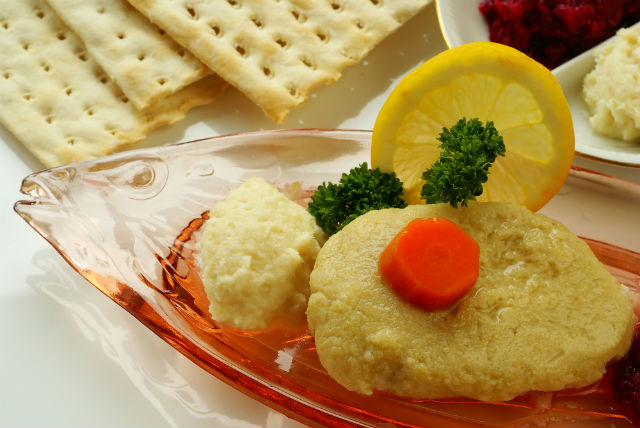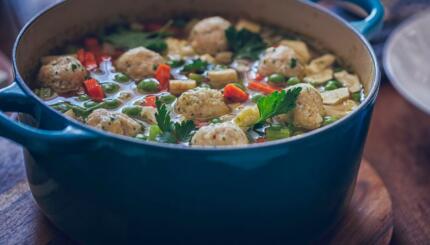For the most part, the Jews of Eastern Europe were poor, and so the Jews who lived in the shtetls (villages) of this region ate peasant food. The exact type of peasant food reflected a number of factors: geography and geographical shifts, the unique international nature of the Jewish community, and, of course, the Jewish dietary laws.
Early in the Middle Ages, most Jews living on the European continent lived in Western Europe, particularly in Germany. In the 13th century, however, the Germans became more antagonistic to the Jews, and many Jews headed eastward to Poland and Russia. The foods of Polish and Russian Jewry reflect this German base. Horseradish, rye bread, and pickles are all German foods eaten by the Jews of Germany and passed on to later generations in Eastern Europe.
Once the Jews arrived in Poland and Russia, they built upon this German foundation and adopted local food customs. Because of the harsh winter climate of this area, Polish and Russian Jews ate a lot of grains, root vegetables, and stews. Fruit was readily available, and it was used in almost everything, including soups and sauces. Perhaps the most famous “Jewish” food of all, bagels, also originated in Poland. The Jews of Poland had a communal sweet tooth, and they added sugar to vegetable dishes and fish. Sweet gefilte fish with beet-sweetened horseradish, or chrain, originated in Poland. Whereas the Polish Jews used a lot of sugar, the Russian Jews opted for peppered and sour foods.
With your help, My Jewish Learning can provide endless opportunities for learning, connection and discovery.
RECIPE: How to Make Perfect Chicken Soup and Matzah Balls
The Jews of medieval Europe were active merchants, and they often came into contact with Jews from other regions. Through these meetings, foreign elements entered Jewish cooking. Noodles, though not widely eaten in the general German population, became a staple of German Jewish cooking after being introduced by German Jewish merchants who had traveled to Italy.
In the Middles Ages, Jewish dietary laws were strictly observed, re-enforced by logistics and communal pressure. Most shtetl Jews did not have private cooking facilities. Each community had a communal cooking house, baking house, and slaughterhouse. The cooking and baking areas had separate sections for meat and dairy. The dietary laws were also responsible for pushing Jews into the food trade. Jews had to produce their own foods because the preparation of kosher food must be supervised by Jews. In addition, wine produced by gentiles was also off-limits to Jews, and so Jews had their own vineyards. Some local governments encouraged these food production and trading activities. Many Jews living in the Polish provinces managed the agricultural lands of the Polish nobility. In exchange, the Jews were given flour mills, dairy production facilities, and exclusive rights to produce certain alcoholic beverages.
RECIPE: Make Your Own Gefilte Fish
The Jews of Eastern Europe had special eating habits for Friday night and Saturday, the Sabbath. The Friday night meal was the most luxurious of the week. A typical meal might include sweet and sour fish, chopped goose liver, pickled meat, and kugel (a sweet noodle pudding). Braided challah bread would be served as well. On Saturday, cholent — a slow-cooked meal made from meats, grains, and beans — would be served along with cold leftovers from the night before.
 Emancipation changed the social and economic position of European Jewry, and that affected Jewish eating as well. Ashkenazic food, which had until this point been peasant food, became more refined in certain places. Austria-Hungary, with its large assimilated, middle-class Jewish population, developed a range of well-made doughy products and pastries, and the Jews there began cooking with wine and paprika.
Emancipation changed the social and economic position of European Jewry, and that affected Jewish eating as well. Ashkenazic food, which had until this point been peasant food, became more refined in certain places. Austria-Hungary, with its large assimilated, middle-class Jewish population, developed a range of well-made doughy products and pastries, and the Jews there began cooking with wine and paprika.
READ: 5 Best Old School Jewish Delis in the US
Ashkenazic Jews began immigrating to the Unites States in the 17th century and came in mass numbers in the late 19th and early 20th centuries. The foods that they brought with them–including chopped liver, borscht (a type of beet soup), bagels, and pickles — became familiar forms of American cuisine. These foods, commonly referred to as “Jewish food,” are, despite their lower-class origins, still eaten and beloved.
kosher
Pronounced: KOH-sher, Origin: Hebrew, adhering to kashrut, the traditional Jewish dietary laws.
kugel
Prounounced: KOO-gull (oo as in book), Origin: Yiddish, traditional Ashkenazi casserole frequently made with egg noodles or potatoes.





